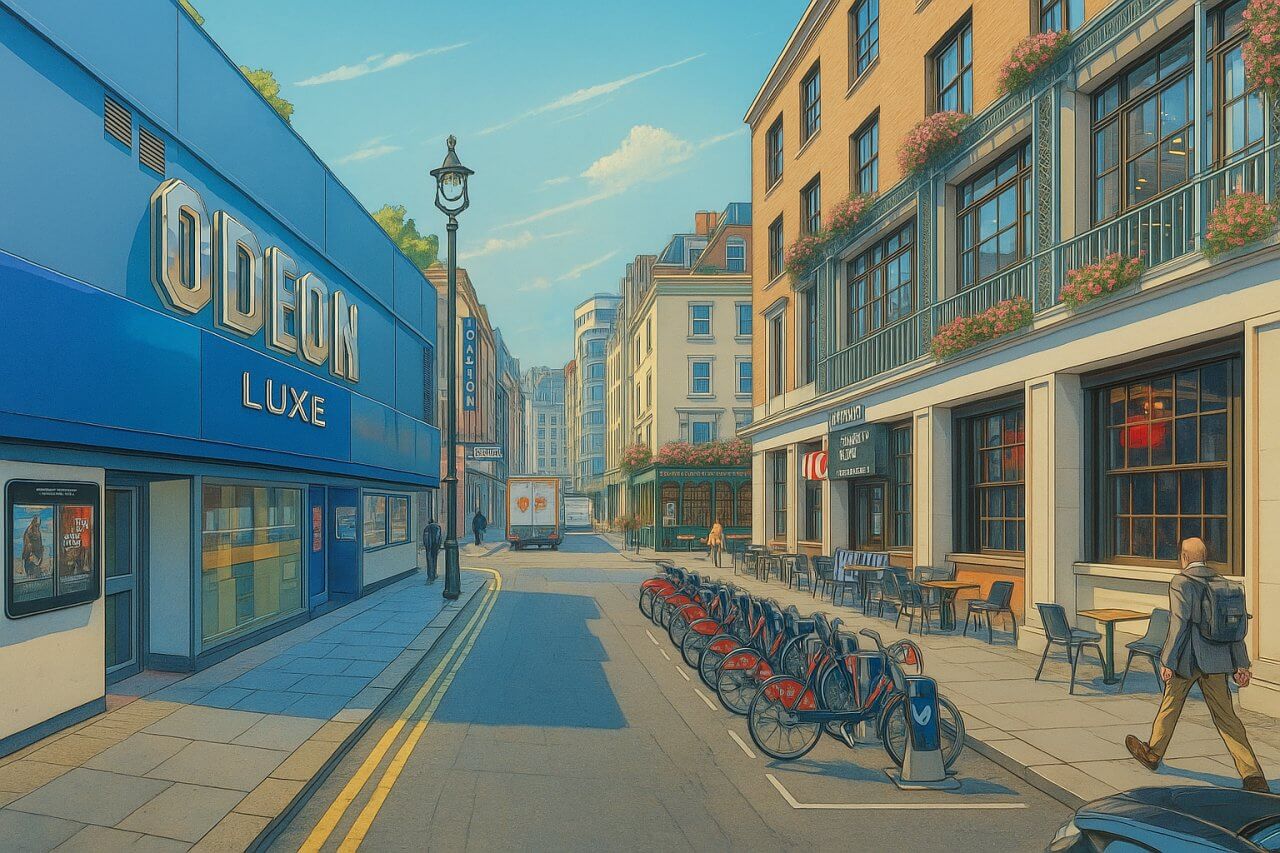
Panton Street, London
Panton Street is a short but historically significant one-way street in the City of Westminster, right in the heart of the West End of London. Running east to west from Whitcomb Street to Haymarket, it is intersected at roughly its midpoint by Oxendon Street. This compact yet bustling street plays host to theatres, restaurants, entertainment venues, and offices, all enclosed within the dense urban fabric of central London.
Location and Layout
Panton Street lies between Whitcomb Street to the west and Haymarket to the east. Approximately halfway along its 150-metre length, it is joined by Oxendon Street, a similarly short street that connects to Coventry Street. Panton Street is one-way in the eastbound direction, guiding traffic from Whitcomb Street towards Haymarket, just south of Piccadilly Circus.
The street is surrounded by major thoroughfares and attractions. To the north lies Coventry Street, linking Leicester Square with Piccadilly Circus. To the south is Orange Street and the quiet square of St. Alban’s Street. The setting places Panton Street right within the commercial and cultural pulse of central London.
History and Origins
Panton Street dates back to the late 17th century and was named after Colonel Thomas Panton, a wealthy horse dealer and property developer who acquired land in the area during the Restoration period. His family name lives on not just in the street itself, but also in the adjoining Panton Street buildings and nearby lanes. The area formed part of the large urban expansion of London following the Great Fire of 1666.
Changes Over Time
Originally residential in nature, the street evolved alongside the transformation of the West End into a hub of leisure and entertainment in the 19th and 20th centuries. Theatres, clubs, and cinemas began to take root nearby, and by the 20th century, Panton Street was known more for its nightlife and commercial venues than private homes.
Points of Interest and Nearby Attractions
While Panton Street is compact, it is ideally positioned near several renowned attractions:
- Theatre Royal Haymarket – One of London’s oldest theatres, located at the east end of the street.
- ODEON Luxe Haymarket – A stylish cinema venue situated directly on Panton Street, offering boutique film experiences.
- Her Majesty’s Theatre – A short walk north on Haymarket, home to productions like "The Phantom of the Opera."
- Piccadilly Circus – London’s iconic junction of neon lights, just a two-minute walk away.
- Leicester Square – London’s film premiere hub is also nearby, filled with restaurants and entertainment options.
Transport Links
Panton Street benefits from excellent transport connectivity. The nearest London Underground stations include:
- Piccadilly Circus Station – Serving the Bakerloo and Piccadilly lines; approximately 3 minutes on foot.
- Leicester Square Station – Serving the Northern and Piccadilly lines; about 5 minutes away.
- Charing Cross Station – For Northern and Bakerloo lines and National Rail; under 10 minutes' walk.
There are multiple bus stops along Haymarket and nearby Coventry Street. Routes such as 6, 9, 12, 88, 94, 139, and 453 connect the area to key destinations like Trafalgar Square, Oxford Street, and Marble Arch.
Real Estate and Residential Landscape
Panton Street is predominantly commercial in character, with office spaces, restaurants, and entertainment venues dominating the built environment. However, there are limited residential properties available above shops and converted flats in period buildings.
As of mid-2025, residential properties in this part of the West End average around £1,500 per square foot (£16,145 per sq metre) for freehold flats or leasehold properties. A 600-square-foot (56 sq metre) one-bedroom flat would likely sell for around £900,000. Rental values are also high, with similar properties commanding between £3,000 to £3,500 per month, reflecting the area’s centrality and amenities.
A Street with Personality
Though small, Panton Street has a big personality. Its dual identity—part historic byway and part cultural magnet—adds to the charm of the West End. The presence of a boutique cinema like the ODEON Luxe, nestled beside fine dining and gastropubs, gives the street a cosmopolitan air that appeals to locals and tourists alike.
Fun Fact
The ODEON Luxe Haymarket, currently a single-screen cinema with luxury seating, occupies the site of a former theatre and has served as a cinema since 1927. Its understated facade hides one of the most luxurious small cinemas in London, often used for independent film releases and special previews.
Quick Facts
- Location: City of Westminster, central London
- Direction of traffic: One-way eastbound from Whitcomb Street to Haymarket
- Intersecting street: Oxendon Street at midpoint
- Historical origin: Late 1600s, named after Colonel Thomas Panton
- Notable attractions: ODEON Luxe Haymarket, Theatre Royal Haymarket, Piccadilly Circus
- Nearest tube stations: Piccadilly Circus, Leicester Square, Charing Cross
- Nearby bus routes: 6, 9, 12, 88, 94, 139, 453
- Average property price (2025): £1,500 per sq ft (£16,145 per sq m)
- Rental value: £3,000–£3,500 per month for a one-bedroom flat
- Character: Commercial and entertainment-focused with limited residential units
References
- British History Online – Haymarket and Panton Street
- Zoopla UK Property Listings (accessed June 2025)
- London Cinema Museum – History of West End Cinemas
Map of Panton Street, London
 Painting of Panton Street, London
Painting of Panton Street, London